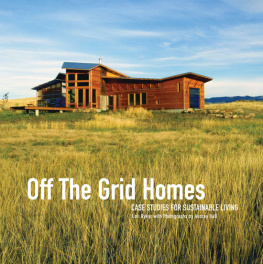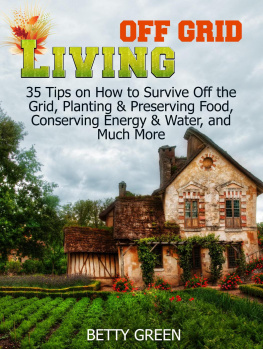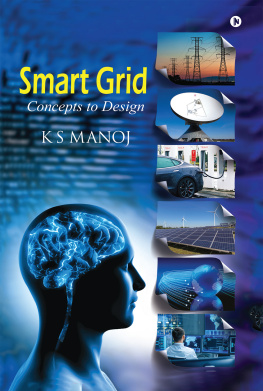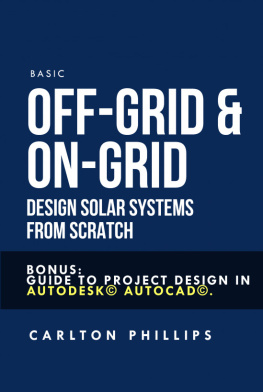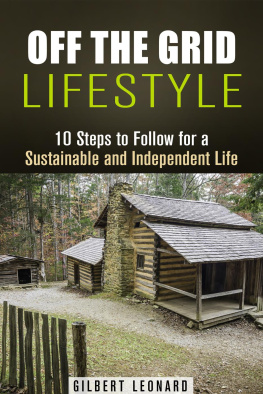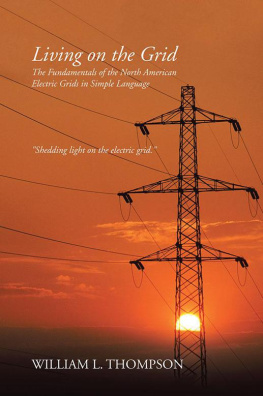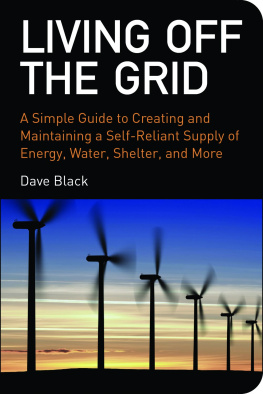Introduction: Coming to terms with off the grid
Energy Conservation and a Healthier Planet
In the 1970s, there was a period, inspired by the oil shortage in the United States, in which there was an initial push to bring alternative energies into the mainstream. While the impetus for the push was brought on by a concern for the ability of modern civilization to continue to develop and expand at the rate it had and concern about excessive rates of energy consumption, there was also naive optimism among alternative-energy supporters that the time had come for clean energy and a cleaner planet. Within a few years, the political global dynamic that drove the oil shortage created new oil resources, resulting in the public and private sectors temporary disinterest in alternative-energy sources. Twenty-five years have passed since the oil crisis of the 70s, and we are again witnessing a potential global energy crisis. This time it is not only political differences that are responsible for the crisis, but a population explosion and the greater energy demands of industrialized countries. Perhaps this time the supporters of alternative clean energy will see their vision secure a foothold in the mainstream of Western society. Maybe this time there will not only be strategies of conservation employed but clean technologies, recently called off-the-grid technologies, that will be incorporated for a healthier planet.
The term off the grid became popular in the early 1990s to describe homes and other buildings that employ alternative-energy-source solutions rather than main line, municipal-tied energy sources to provide power. Early in the development of alternative living lifestyles, such solutions were believed to be only applicable for those people living in remote locations and/or cooperative communities. As the term off the grid gained popularity with a new generation of energy consumers, it grew into a catch phrase that conveyed living environments that are completely disconnected and without reliance on a public infrastructure. Without a clearly articulated definition, off the grid by default came to mean no reliance on publicly supplied energy, sewer, or water. In the past few years, the term off the grid or off-grid has found great support on Web sites. Even the popular Wikipedia site has a listing for off the grid: a method of construction that relies on renewable energy sources rather than traditional public utility sources provided by the utility grid.*
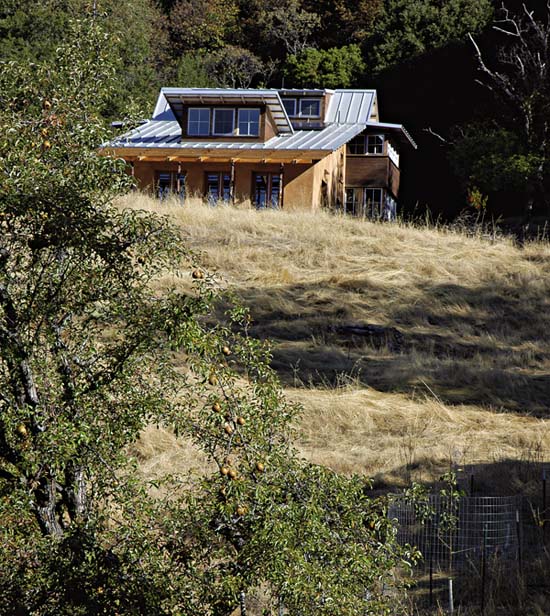
This residence, located in Ukiah, California, is 100 percent off the grid. The homes design engages its owners with the cycles of the Earth through passive heating and cooling.
As I began researching homes that fit the off-the-grid qualification, it became clear to me that there are many aspects of energy and resource independence that are applicable to this term. For instance, rainwater collection, used to reduce a homeowners reliance on municipal water, provides a component of off-the-grid living, yet the house may not be 100 percent off the grid. In the same way, someone may elect to integrate a photovoltaic (PV) system that is large enough to support all of their electrical-energy needs but live within the city limits, which requires them to remain tied to the municipal infrastructure. They may not be living 100 percent off the grid, but they have found a way to produce their own energy while continuing to live within the density of the city. As a happy consequence, their intertie to the power grid may allow them to share their extra clean energy created by their PV system with their neighbors through a buy-back program. In the spirit of conservation, some off-the-grid homes gain independence due to a homeowners commitment to low technology systems in a remote location, such as a cabin that has no running water or power. Long-term planning may even allow focused homeowners to phase out their reliance upon the municipal system to fit their available funding. One may start with water collection, later add a solar hot-water heater, and eventually add a PV system and a gray-water systemwith the final goal of rendering their home life fully independent from the grid.
Off the grid no longer means a system that is 100 percent independent from municipal ties, but it instead defines the use of sources and strategies that integrate one or more systems that are not reliant upon the municipal infrastructure. While we may dream of a day when we are no longer reliant upon nonrenewable energy systems or systems of disposal that are polluting, toxic, and degrading to our environment, our ability to participate in the preservation of the environment by incorporating and integrating off-the-grid practices is possible today. The choice to integrate off-the-grid systems into our lives not only provides a cleaner lifestyle, but such choices also act as dynamic political statements that can spur the development of cleaner municipal infrastructures from which we can all benefit.
As the advanced world is faced with declining oil reserves and a growing population that recognizes the consequences of our actions upon the Earth, not only individuals but entire communities and even large energy cooperatives are developing cleaner energy practices. From individual homeowners who have their own PV arrays that work together as a small, clean energy plant when joined in a grid-intertie system, to a statewide energy cooperative that commits to the development of large-scale wind turbines for energy production, cleaner energy and a healthier Earth are within our reach as long as we remain attentive and committed to a vision of a world in which our own perceived needs are not always placed first.

